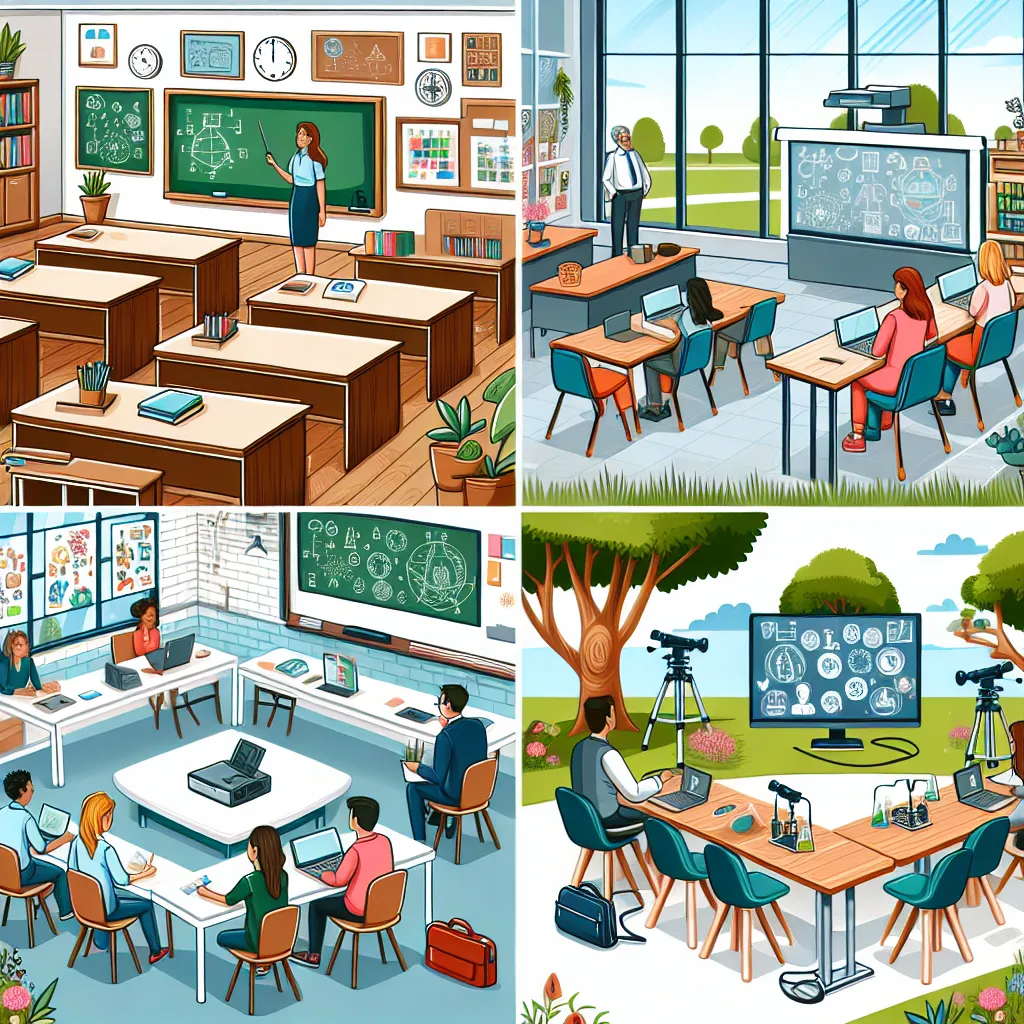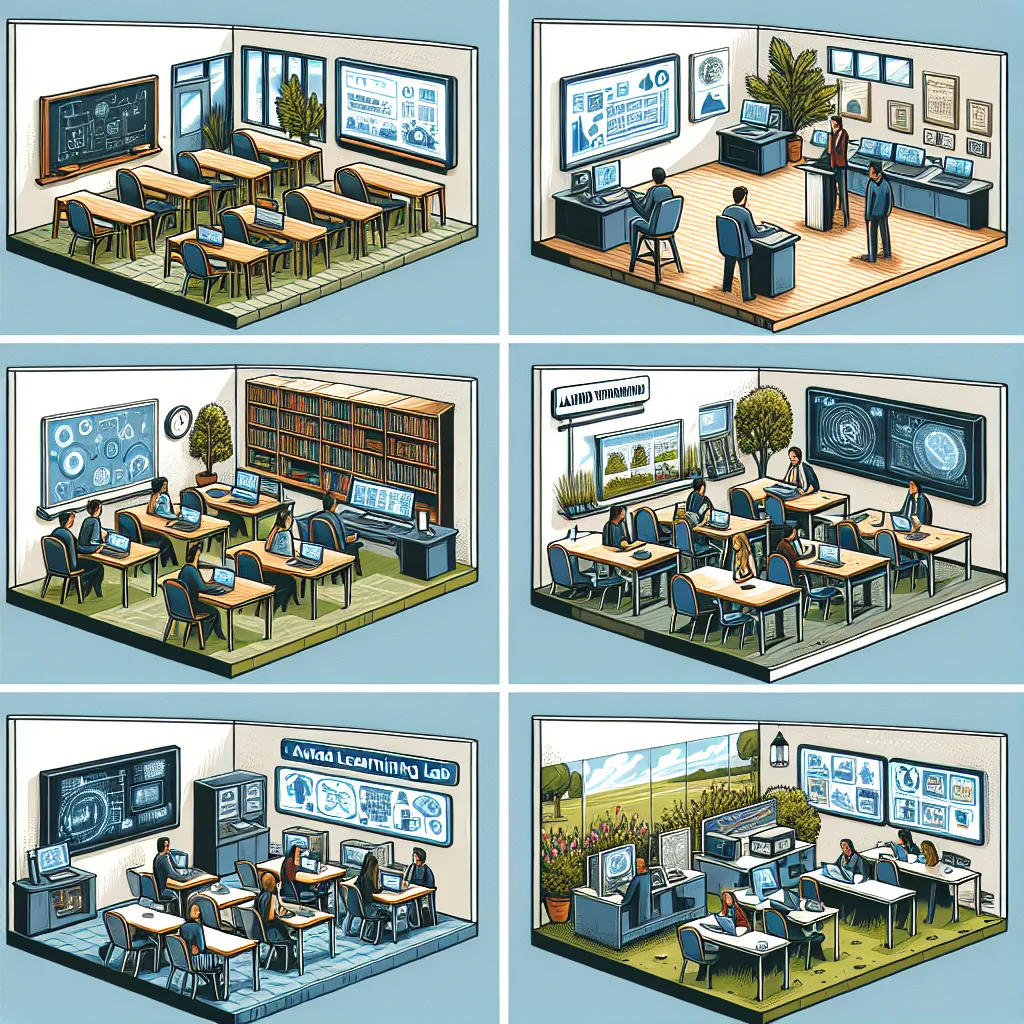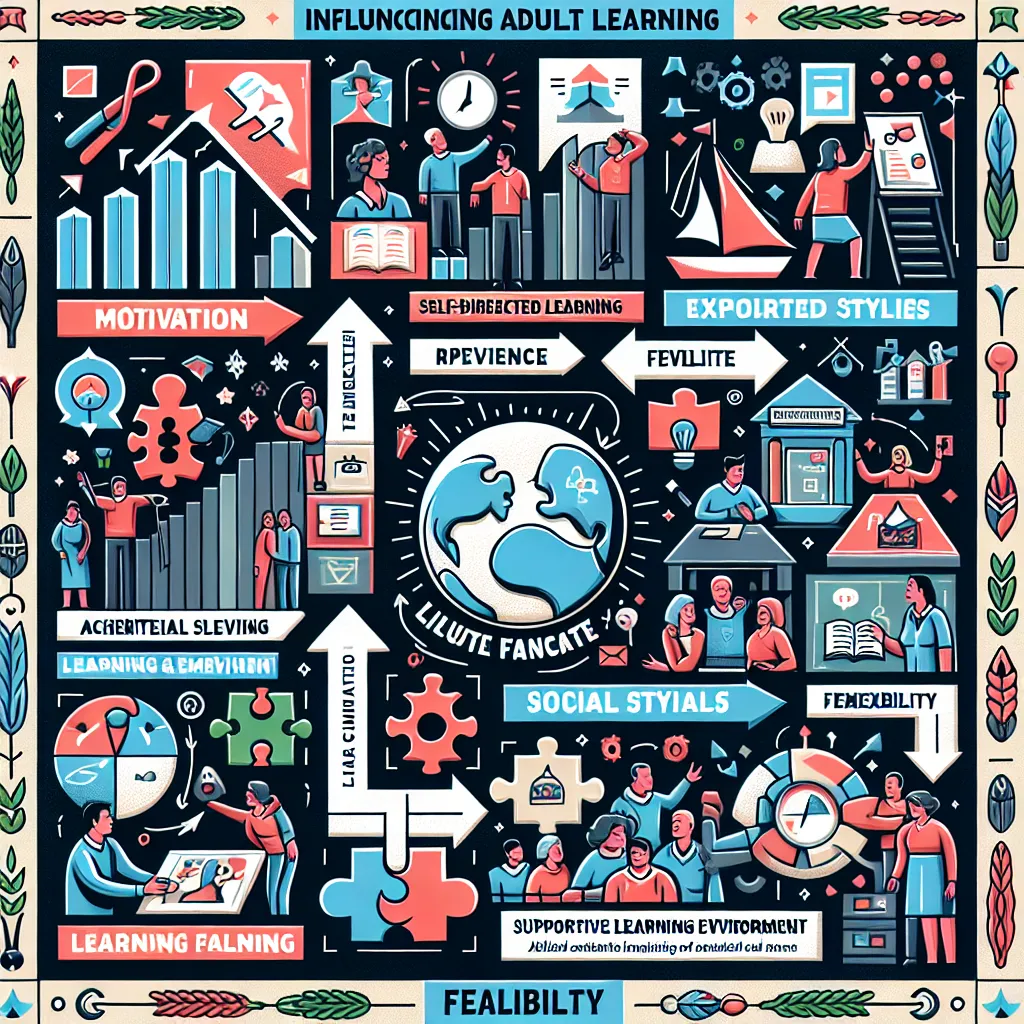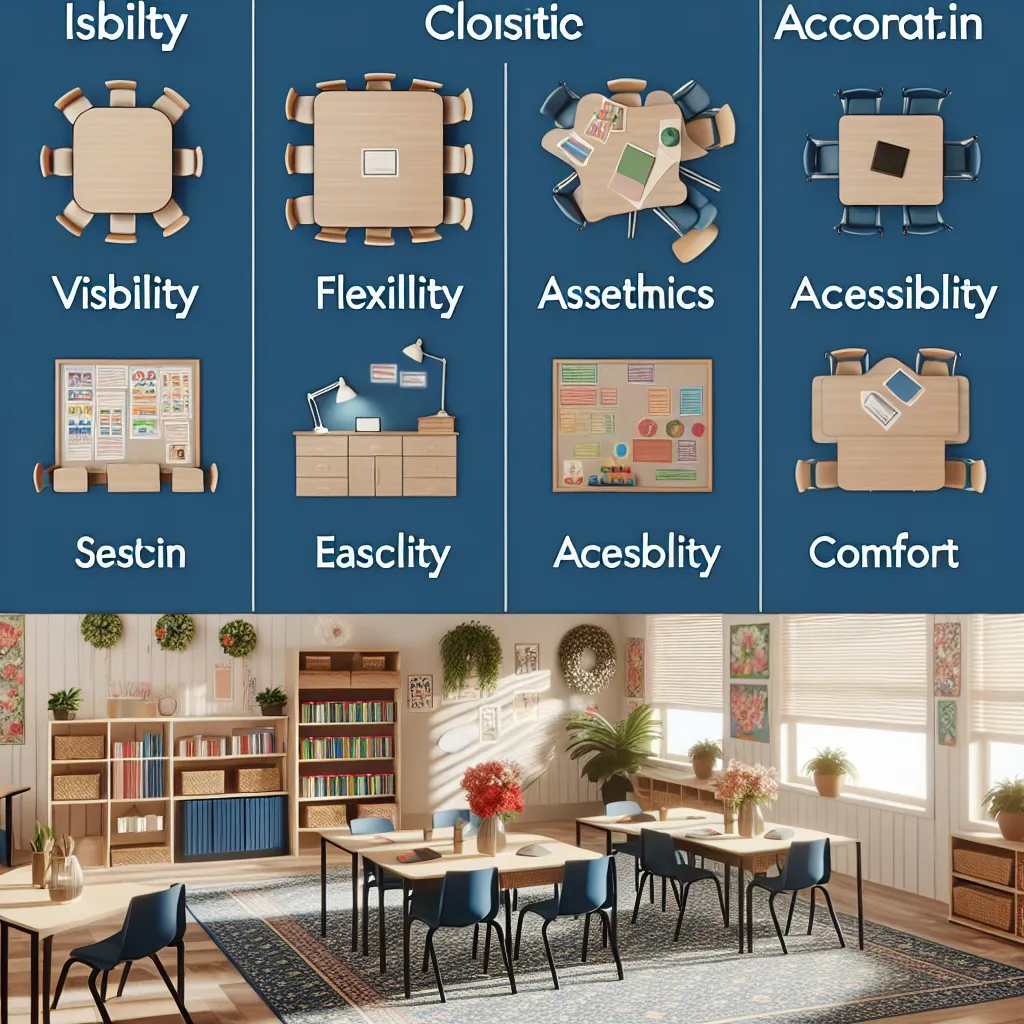Ask AI on The Internet
Question: Six different classroom settings in which training and development initiatives can be applied
Certainly! Training and development initiatives can be applied in various classroom settings, each suited to different learning styles and objectives. Here are six different classroom settings: 1. **Traditional Classroom Setting**: - **Description**: Rows of desks facing a central teaching area where the instructor delivers content. - **Best For**: Structured, lecture-based content, theoretical learning, large groups. - **Benefits**: Clear focus on the instructor, suitable for conveying large amounts of information, easy to manage. 2. **Collaborative/Open Classroom Setting**: - **Description**: Groups of desks or tables organized to encourage interaction and group work. - **Best For**: Team-based activities, discussions, interactive learning. - **Benefits**: Promotes collaboration, enhances communication skills, encourages critical thinking. 3. **Online or Virtual Classroom Setting**: - **Description**: Learning conducted via digital platforms, allowing remote participation. - **Best For**: Remote learning, flexible schedules, diverse geographical locations. - **Benefits**: Accessibility, flexibility, use of multimedia resources, and ability to record sessions for later review. 4. **Laboratory or Hands-On Classroom Setting**: - **Description**: Equipped with specialized equipment and resources for practical, hands-on experience. - **Best For**: Scientific experiments, technical skills training, vocational education. - **Benefits**: Real-world application, interactive learning, development of practical skills. 5. **Flipped Classroom Setting**: - **Description**: Students review material at home and engage in hands-on activities and discussions during class time. - **Best For**: Courses that benefit from active application of concepts during in-person sessions. - **Benefits**: Maximizes classroom time for interactive learning, reinforces understanding through practice, encourages self-paced study. 6. **Blended/Hybrid Classroom Setting**: - **Description**: A combination of traditional in-person classes and online learning. - **Best For**: Courses requiring both theoretical knowledge and practical application. - **Benefits**: Flexibility, the balance between face-to-face interaction and online resources, varied learning modes to cater to different learning preferences. Tailoring the training and development initiatives to the right classroom setting is crucial for maximizing learning outcomes and ensuring that the specific goals of the training program are met.
Think your answer is better than the AI's? Post it below.
Other Most Relevant Posts:
Question Tags
If you want your question answered by an AI, click here.







Post your own comment: